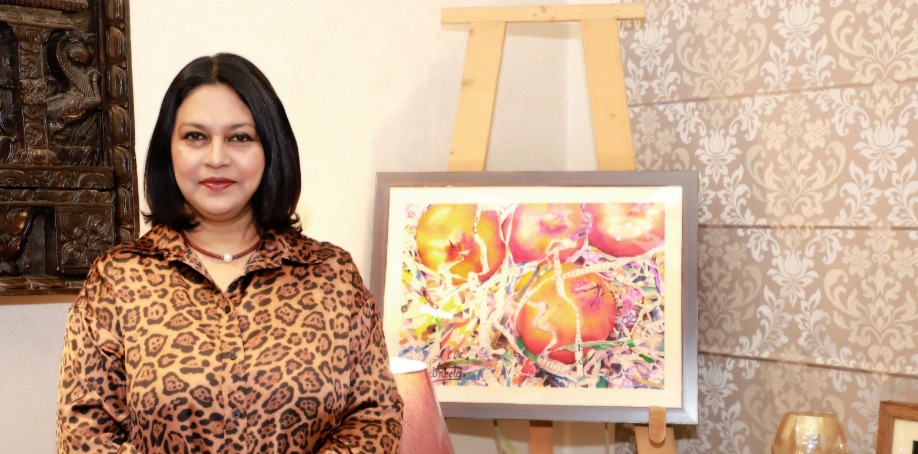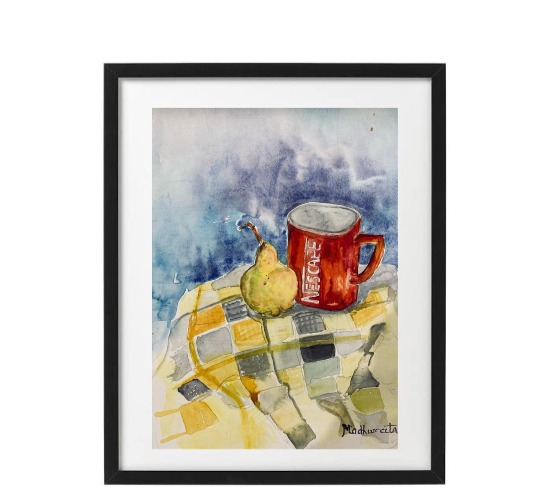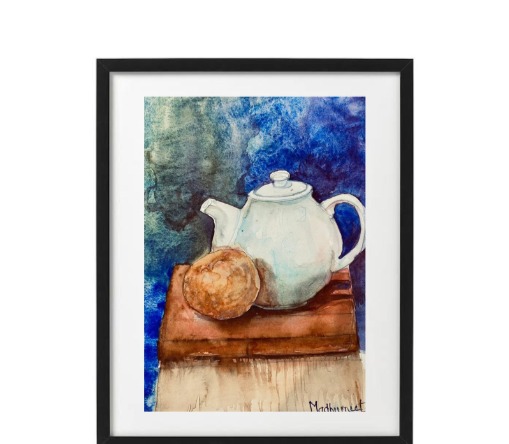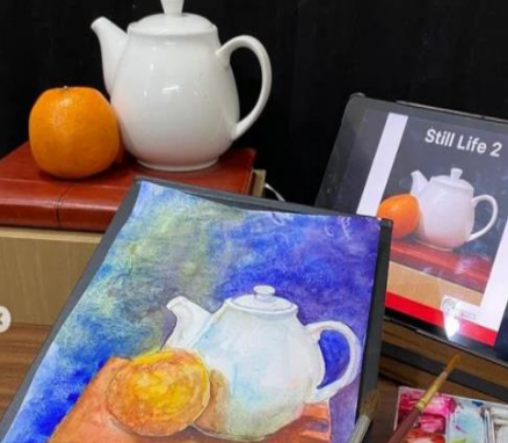It is not About Painting Life, It Is About Making Painting Alive - Paul Cezanne.
A through study of Still Life breathes life in your Art Work.Still life adds another dimension to your Artistic acumem. Hence it is a must in Art curriculum.

A still life is a drawing or painting that focuses on still or unmoving or static objects. The subject matter is inanimate and never moves, typically with a focus on household objects, flowers, or fruits.
My Still Life painting has more to do with light and shadow than with the objects themselves - William C. Wright.
Still-life work contrasts figure drawing which focuses on a live human model. With a still life you know the objects won’t ever move and you can practice objects with different properties like shiny metal, clear porcelain, or bulbous apples.
Fruit bowls are a popular choice because they’re made up of simple shapes and everyone has fruit lying around!
What Goes into A Still Life

Starting off as a way for students to practice shape and form, understanding the play of light and shadow over the objects thus making them 3 dimensional. The still life has evolved into a full-fledged genre of art. You can arrange any collection of inanimate objects to be the subject of a still life
Let me share some of the most common themes and object choices when doing a still life: Flower arrangements – Bouquets or vases of flowers are some of the most popular subjects of still life artworks. Table spreads and foods –these artworks contain everything from dead birds to sliced fruit to untouched banquet tables. Common objects – Normal objects that you would find lying around your house suddenly transform into the subject of your art. They can be in a specific arrangement or placed to tell a story through visuals. Symbolic arrangements – by utilizing visuals, composition, color, and subject matter, an artist can paint objects that represent symbols or patterns for their still life work.
Time Stands Still best in moments that look suspiciously like ordinary life - Brian Andreas.
when you create still life you capture the essence of time of that era.
So still life sometimes represents a slice of history!
Why Practice Still Life?
Because it helps us to:
- Slow down.
- Observe mundane things around us.
- Learning to see and observe.
- Learning from our mistakes.
- Becoming Confident.
- Learning to appreciate simple things in life.
- It helps to enhance a better way of presentation.
Various important elements of still life are:
- Composition
- Theme
- Light
- Perspective
Here’s a brief rundown of how to paint your own still life:
- 1. Find objects and arrange them in the composition you want.
- 2. Choose the angle at which you will be drawing from and decide if you’re going to use natural light or an artificial light source.
- 3. Begin sketching out the arrangement of your objects on a canvas/paper to create an outline.
- 4. Once you have the basic shapes it’s time to start shading. Most artists start with the background and the darkest shadows.
- 5. Layer the objects in the foreground on top of the completed background.
- 6. Add highlights throughout the painting and pay attention to spots with extra shine.
- 7. Refine details and consider ways to make your composition even better.
- 8. For a bright finish, add a thin layer of glaze to your work. If you’re eager to get started with a still life project but are unsure of what to use as a subject matter, try grabbing some fruit or popcorn and get drawing!
Still, life drawing helps the artist
- To become better at drawing.
- Makes you a keen observer
- Enables you to create a viable composition using ordinary inanimate objects around you.
- It empowers us to capture light and shadow at its best.
Feeling Inspired?
See more of my featured work on the website / Instagram / Facebook.
Let’s Connect.
Facebook: https://www.facebook.com/madhumeetab
Instagram: https://www.instagram.com/madhumeetabanerjee/


Originally published May 2, 2019